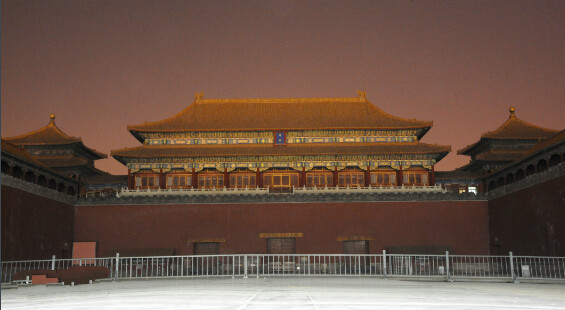Chose China
Why Consider Study Abroad in China
With an abundance of renowned colleges and universities, China's educational system has produced some of the world's most brilliant minds of nearly every discipline. World leaders in Business, Mathematics, Astronomy, Martial Arts, Philosophy and more have studied in China, and make this a coveted location to study abroad. China is vast and hugely populated, with over 20% of the world's people calling this lively country home. Some areas of China will astound you with colorful rural beauty and traditional lifestyles, while the major metropolitan areas are likely to make your head spin with their bright lights and true world-city excitement.
Go to school here and learn about China's influential artistic and political culture, and its mixture of dense urban areas and rural farming villages. You can also be a part of the country's vivid transformation from third- to first-world. There's no better time to take part in the boundless educational opportunities that China provides.

Weather for Everyone
Wondering where to study abroad in China? For many, the weather is key component to their study abroad experience. With this country it's a little like asking, "How's the weather in the US?" Since the country is large, the biggest one in Asia, in fact, its climates vary greatly.
There are areas of heavy rainfall and monsoons, chilly mountainous regions, and tropical neighboring islands. These areas are divided up into five temperature zones and what's called a "plateau-climate zone," which can help plan where and when to visit, although you may need a map to really sort these out!
Cold-temperate Zone: Northern part of Heilongjiang Province and Inner Mongolia. Some cities within these provinces are Harbin, Jiamusi, and Qiqihar.
Temperate Zone: Jilin, Northern Xinjiang; and most of Heilongjiang and Liaoning. Cities within these provinces are Shenyang, Urumqi, Hohhot, and Dunhuang.
Warm-temperate Zone: The middle and lower ends of the Yellow River, Shandong, Shanxi, Shaanxi, and Hebei Provinces. Cities within these provinces are Taiyuan, Luoyang, and Zhengzhou.
Subtropical Zone: South of Qinling Mountain-Huaihe River, and east of Qinghai-Tibet Plateau. Cities within these provinces are Zhenjiang, Guangzhou, Jiujiang and Yichang
Tropical Zone: Hainan province, southern Taiwan, Guangdong, and Yunnan Provinces. Some cities within this region are Haikou and Sanya.
Plateau-Climate Zone: The Qinghai-Tibet Plateau. Cities within these areas are Lhasa, Shigatse and Shannan.
An Outdoor Adventurer's Fantasyland
With the varied temperatures of China comes a multitude of all-weather activity. Have you ever dreamed of visiting the mysterious lands of Tibet, perhaps catching a glimpse of the Dalai Lama or giving Mt. Everest a go? Catch a ride on the Qinghai - Tibet Railway and travel the highest and longest plateau railroad in the world. Be sure to pack warm, though, and allow plenty of time to acclimate to the super-high elevation.
If the mountains aren't your thing, how about taking a break from your studies at one of China's beautiful beaches? Visit Hainan Island and you'll be soaking in the sun in relative peace and quiet. Toss in the spectacular views of the exotic South China Sea and a margarita and you're set!
A Storied Past
Some students come to study abroad in China strictly to learn its history, which in itself can take years! Whether you're a history student, or a learner of another discipline, the elaborate history of China is sure to impact your studies in some form sooner or later. Here's a very quick rundown of some highlights in China's history:
The Prehistoric Era
Did you know that China is home to the first recorded use of fire by Homo erectus? It's also believed that stone tools were created and used for the first time during this era in Chinese history.Ancient Era
During this time period, agriculture, political systems and religions were rapidly developing and expanding in China. This era was also characterized by the development of a system of writing - a pretty important invention!Imperial Era
This is when the famous Great Wall of China was constructed, along with the inventions of paper and porcelain. The Silk Road trade route was also established, providing a method of trade with the Western world.Modern Era
As the production of silk and porcelain increased, the Western market for a "new" drink also expanded greatly: Tea! It was also during this era that China abolished slavery
A Fascinating Study Abroad Locale
China is often considered a top location for taking your studies abroad. Whether you're interested in studying the rich traditions steeped in Chinese culture, the archaeological sites of the very beginning of human time, or the complex languages of China, this country is sure to provide you with countless opportunities for learning and enrichment that simply aren't to be found in your home country.
Why Consider Study Abroad in China Programs
With an abundance of renowned colleges and universities, China's educational system has produced some of the world's most brilliant minds of nearly every discipline. World leaders in Business, Mathematics, Astronomy, Martial Arts, Philosophy and more have studied in China, and make this a coveted location to study abroad.
China is vast and hugely populated, with over 20% of the world's people calling this lively country home. Some areas of China will astound you with colorful rural beauty and traditional lifestyles, while the major metropolitan areas are likely to make your head spin with their bright lights and true world-city excitement.
Go to school here and learn about China's influential artistic and political culture, and its mixture of dense urban areas and rural farming villages. You can also be a part of the country's vivid transformation from third- to first-world. There's no better time to take part in the boundless educational opportunities that China provides.
Weather for Everyone
Wondering where to study abroad in China? For many, the weather is key component to their study abroad experience. With this country it's a little like asking, "How's the weather in the US?" Since the country is large, the biggest one in Asia, in fact, its climates vary greatly.
There are areas of heavy rainfall and monsoons, chilly mountainous regions, and tropical neighboring islands. These areas are divided up into five temperature zones and what's called a "plateau-climate zone," which can help plan where and when to visit, although you may need a map to really sort these out!
Cold-temperate Zone: Northern part of Heilongjiang Province and Inner Mongolia. Some cities within these provinces are Harbin, Jiamusi, and Qiqihar.
Temperate Zone: Jilin, Northern Xinjiang; and most of Heilongjiang and Liaoning. Cities within these provinces are Shenyang, Urumqi, Hohhot, and Dunhuang.
Warm-temperate Zone: The middle and lower ends of the Yellow River, Shandong, Shanxi, Shaanxi, and Hebei Provinces. Cities within these provinces are Taiyuan, Luoyang, and Zhengzhou.
Subtropical Zone: South of Qinling Mountain-Huaihe River, and east of Qinghai-Tibet Plateau. Cities within these provinces are Zhenjiang, Guangzhou, Jiujiang and Yichang
Tropical Zone: Hainan province, southern Taiwan, Guangdong, and Yunnan Provinces. Some cities within this region are Haikou and Sanya.
Plateau-Climate Zone: The Qinghai-Tibet Plateau. Cities within these areas are Lhasa, Shigatse and Shannan.
An Outdoor Adventurer's Fantasyland
With the varied temperatures of China comes a multitude of all-weather activity. Have you ever dreamed of visiting the mysterious lands of Tibet, perhaps catching a glimpse of the Dalai Lama or giving Mt. Everest a go? Catch a ride on the Qinghai - Tibet Railway and travel the highest and longest plateau railroad in the world. Be sure to pack warm, though, and allow plenty of time to acclimate to the super-high elevation.
If the mountains aren't your thing, how about taking a break from your studies at one of China's beautiful beaches? Visit Hainan Island and you'll be soaking in the sun in relative peace and quiet. Toss in the spectacular views of the exotic South China Sea and a margarita and you're set!
A Storied Past
Some students come to study abroad in China strictly to learn its history, which in itself can take years! Whether you're a history student, or a learner of another discipline, the elaborate history of China is sure to impact your studies in some form sooner or later. Here's a very quick rundown of some highlights in China's history:
The Prehistoric Era
Did you know that China is home to the first recorded use of fire by Homo erectus? It's also believed that stone tools were created and used for the first time during this era in Chinese history.Ancient Era
During this time period, agriculture, political systems and religions were rapidly developing and expanding in China. This era was also characterized by the development of a system of writing - a pretty important invention!Imperial Era
This is when the famous Great Wall of China was constructed, along with the inventions of paper and porcelain. The Silk Road trade route was also established, providing a method of trade with the Western world.Modern Era
As the production of silk and porcelain increased, the Western market for a "new" drink also expanded greatly: Tea! It was also during this era that China abolished slavery
A Fascinating Study Abroad Locale
China is often considered a top location for taking your studies abroad. Whether you're interested in studying the rich traditions steeped in Chinese culture, the archaeological sites of the very beginning of human time, or the complex language of China, this country is sure to provide you with countless opportunities for learning and enrichment that simply aren't to be found in your home country.




